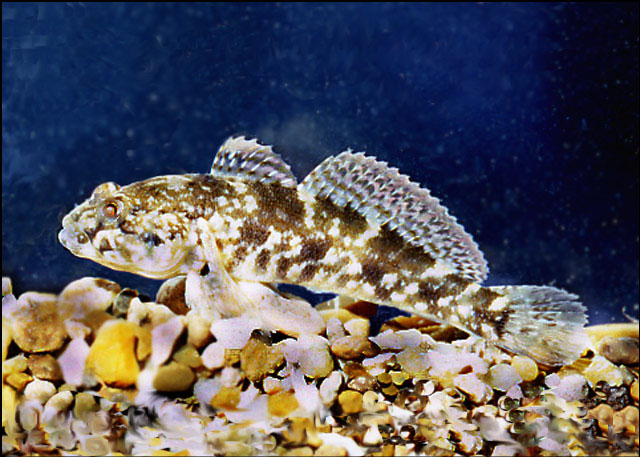| Gobiidae (Gobies), subfamily: Gobiinae |
| 20 cm TL (male/unsexed) |
|
demersal; brackish; marine |
| Europe: Azov and northern Black Sea basins from Bulgaria to eastern Crimea; in freshwater, found only in Danube delta. |
|
This species is distinguished from other related species in the Black Sea basin by the following characters: pelvic disc 80-100% of distance between its origin and anus; cycloid scales completely cover predorsal area and nape; pelvic disc fraenum with angular lobes, fraenum length 1/6-1/2 of its width at base; scales in midlateral series 58-70 + 2-4; snout length 1.3-1.5 times in eye diameter; first branched ray of second dorsal about as long as penultimate ray; posterior part of first dorsal without black spot (Ref. 59043). |
| Rarely enters freshwaters (Ref. 26334). Inhabits inshore habitats, brackish lagoons, estuaries and lower part of large rivers; usually associated with rock bottom or sunken trees. Spawns at 2 years, from December to April where females can repeat spawning during a season. Feeds mostly on crustaceans (Ref. 59043). |
|
Least Concern (LC); Date assessed: 05 March 2010 Ref. (130435)
|
| harmless |
Source and more info: www.fishbase.org. For personal, classroom, and other internal use only. Not for publication.

